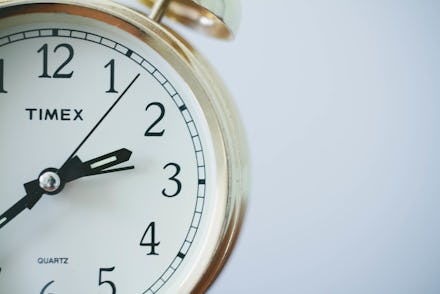What Is Daylight Saving Time? The History Behind Why We Set Our Clocks Forward and Back

On March 13 at 2 a.m., almost everyone who lives in the United States (unless you live in Hawaii or Arizona) and 78 other countries will need to turn their clocks forward by one hour for daylight saving time, according to NJ.com. As always, daylight saving time starts on the second Sunday of March and runs for about eight months until the first Sunday of November, when clocks are turned back an hour.
Daylight saving time started in 1918 during World War I as a way to allegedly conserve fuel, according to NJ.com. The public didn't like the idea, and daylight saving time fell to the state's discretion until the Uniform Time Act of 1966, according to Live Science. But the idea of "maximizing daylight" can actually be traced back to the late 1700s to Benjamin Franklin, according to the Atlantic.
Read more: Daylight Saving Time Isn't Just Annoying — It Could Be Bad for Our Health, Says Science
In 2007, daylight saving time was lengthened by a month due to the Energy Policy Act of 2005, according to NJ.com.
Unfortunately, the energy savings that come with daylight saving time aren't very significant, according to the Atlantic. In 2008, the National Bureau of Economic Research found that while the use of lighting dropped, the use of air-conditioning increased in turn.
So not only is there a lost hour of sleep, but the hour of extra sunlight doesn't really provide many health benefits, according to the Washington Post. Experts have found more suicides, headaches and workplace accidents around the start and finish of daylight saving time. A large component of that mood disrupting has to do with the change in the circadian rhythm, or the body's 24 hour cycle (which also deals with sleep).